The Mercury 13: Women with the 'right stuff'
- Published
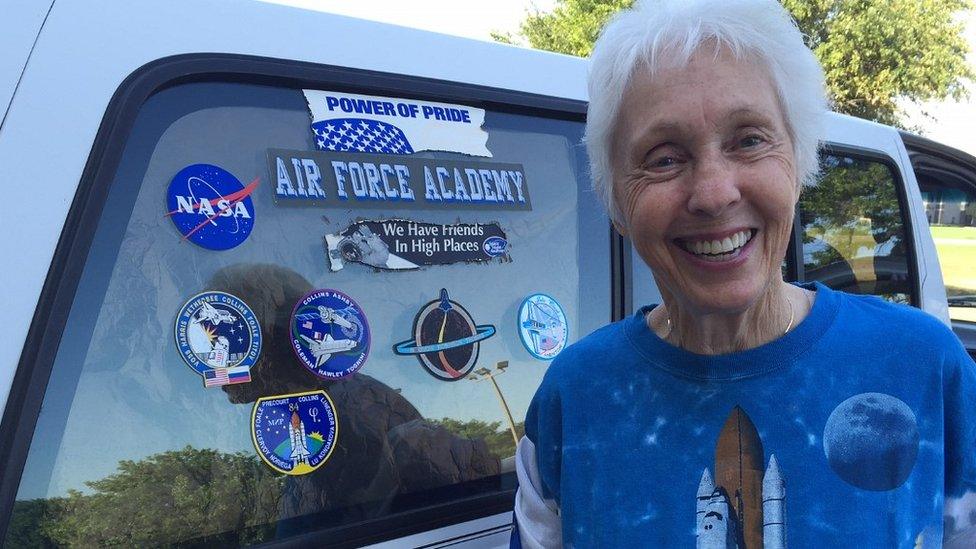
Wally Funk was one of Nasa's early class of women astronaut candidates
In the early 60s, 13 women undertook secret tests at Nasa to see if they could become astronauts. Were it not for rules which prevented them from flying missions, the first woman in space could have been an American.
When Nasa astronaut Kate Rubins recently became the 60th woman to go into space, Wally Funk was watching.
There are two televisions in her Texas living room. One is tuned permanently to Nasa TV.
Space is one of her passions. The other is flying. Funk was America's first female Federal Aviation Administration inspector and it was her skills as a pilot that, in 1961, led her to become one of 13 women who passed secret medical tests to become an astronaut.
The Mercury 13, as they are now known, undertook the same tough mental and physical tests as the famous silver-suited Mercury 7.
Those latter all-American heroes included John Glenn and played an important part in the space race against the Soviet Union, eventually placing a man on the Moon.
The Mercury 7 tests, memorably detailed in Tom Wolfe's book The Right Stuff (later a film), pushed the men to their physical limits. The doctor who devised them, William Randolph Lovelace, was also head of Nasa's Special Committee on Bioastronautics.
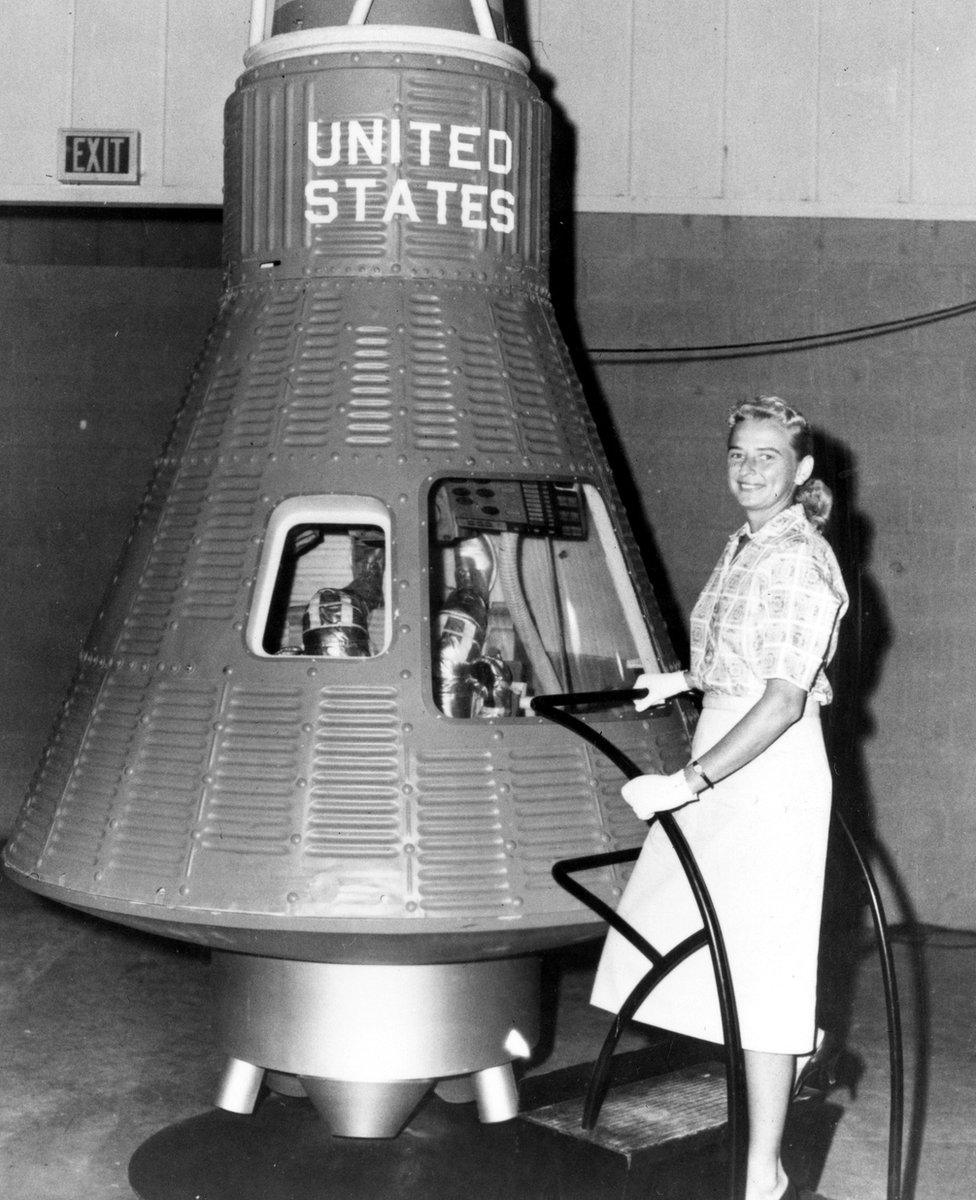
Pilot Jerrie Cobb passed the training tests devised by William Randolph Lovelace
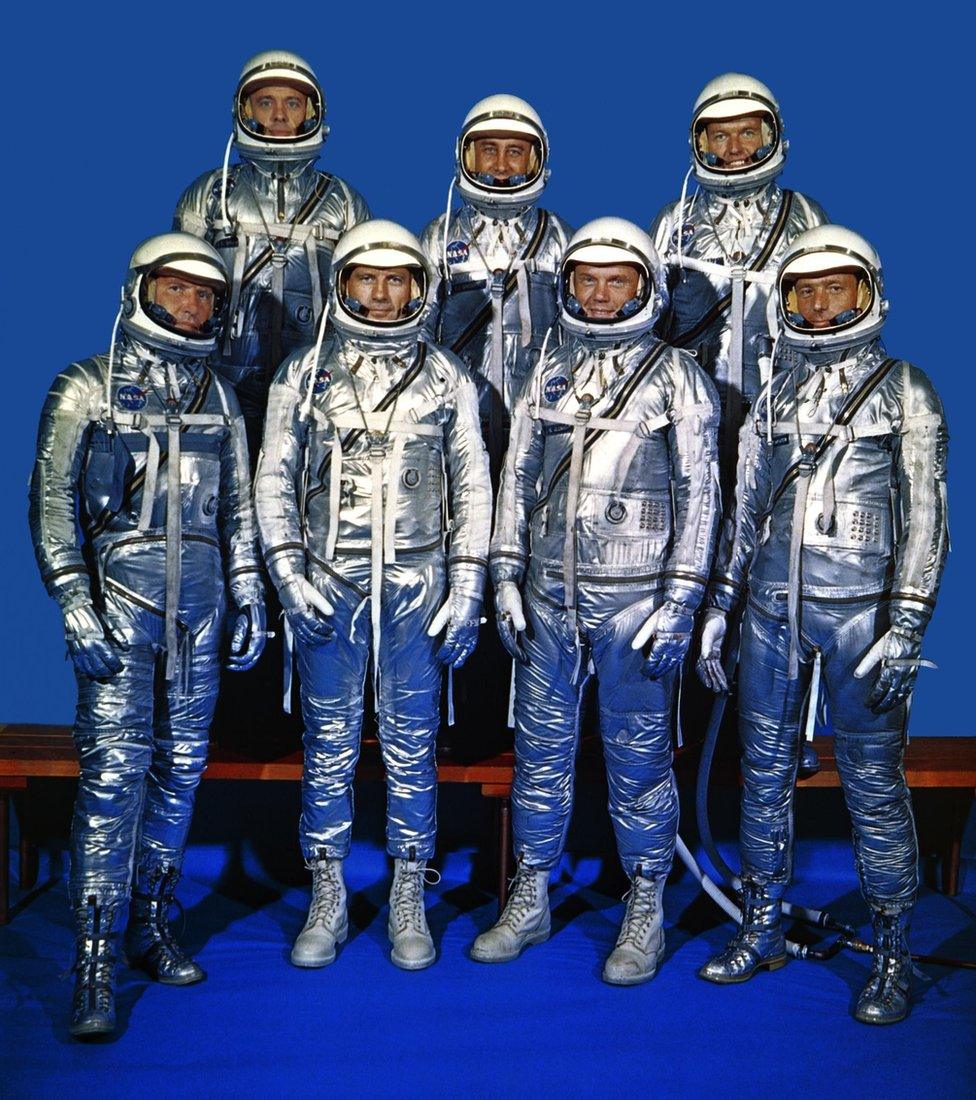
The Mercury 13 never flew on missions, unlike their male counterparts (pictured here)
Lovelace had successfully tested one female pilot, Jerrie Cobb, in 1960 and now wanted to see if it was a one off or if other women could pass. Aviatrix Jackie Cochran helped fund it and the chosen women were all accomplished pilots, some with more flying hours than Glenn, and they were prepared to attend at a moment's notice.
Funk's mother was denied an aviation career - after her father and husband said her duty was to be a good wife and mother - so she was not going to let her own opportunity pass.
"Lovelace said be there on Monday and I left right away with $10 in my pocket," she says.
Funk, the youngest, excelled. In one particular test she was off the scale and beat everyone - male and female - after remaining in an isolation tank without any ill effects for an incredible 10 hours and 35 minutes

Nasa astronaut Kate Rubins became the 60th woman to go into space on 7 July
To be honest it's hard to imagine Funk being silent for that long. A vivacious, loquacious, determined powerhouse, she is rarely still, loves to chat - loudly - and has energy levels that defy her 70 plus years (though she will only ever admit to being 45).
Despite a built up shoe on one foot as a result of a botched hip operation, she walks as fast as she talks. During our mini-road trip for the BBC World Service documentary, Women with the Right Stuff, I struggled to keep up.
She's a joyously colourful character, wearing blue flight suits and Nasa mission patches. Funk, who I suspect is not used to being in the passenger seat of any vehicle, also has the disturbing habit of refusing to wear a seat belt and jumping out of our rental car before it came to a halt.
With me not wanting to see her flying through the windscreen, and in an effort to stop the seatbelt warning sounds, she complied reluctantly.
The next day, after her usual exit from a moving car in a parking lot, I discovered why the beeping had stopped. On her empty seat lay a fastened seat belt. She was simply sitting on top of it.
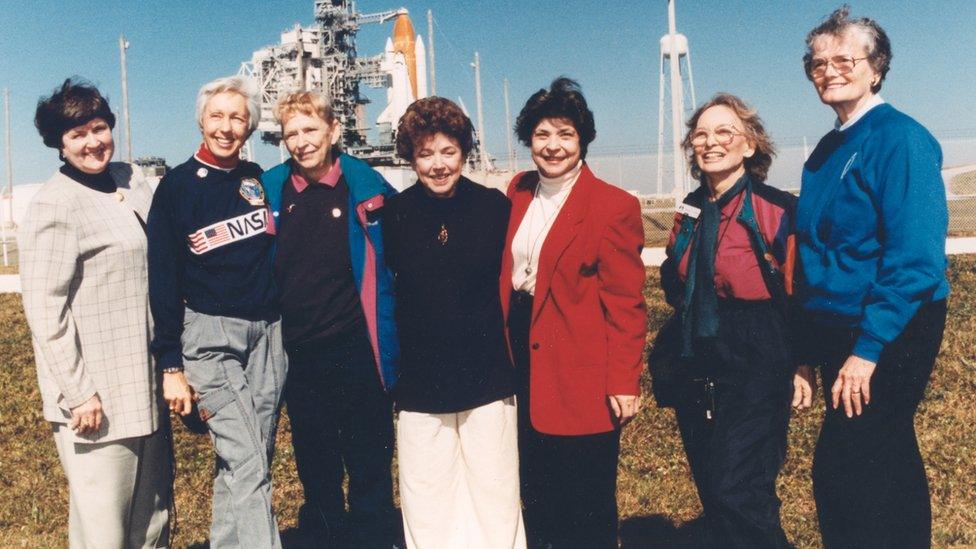
Seven members of the Mercury 13 are pictured in front of the space shuttle in 1995. From L to R: Gene Nora Jessen, Wally Funk, Jerrie Cobb, Jerrie Truhill, Sarah Rutley, Myrtle Cagle and Bernice Steadman

The first woman in space could have been American, but the Soviet Union beat the US to it - sending Valentina Tereshkova into orbit in 1963
The Mercury 13 did not make it into space. The programme, never officially sanctioned by Nasa, lost its funding and the space agency insisted on jet experience as criteria for astronaut training, even though no women were allowed to fly jets at the time.
Funk and the 12 other successful women pilots and wannabe astronauts are now rightly known as trailblazers. People write expressing their thanks and admiration or send pictures requesting autographs, which she's stopped signing after discovering them on sale for $200 on eBay.

The Mercury 13
Jerrie Cobb
Myrtle Cagle
Janet Dietrich - deceased
Marion Dietrich - deceased
Wally Funk
Sarah Gorelick (later Ratley)
Jane Briggs (later Hart) - deceased
Jean Hixson - deceased
Bernice Trimble (later Steadman) - deceased
Jerri Sloan (later Truhill)
Rhea Hurrle (later Woltman)
Gene Nora Stumbough (later Jessen)
Irene Leverton

Since 1961, Funk has not only continued flying and inspiring others, her ambition to become an astronaut remains. She took additional tests with Lovelace and, more recently, spent a week training with cosmonauts in Russia. As a pilot who also did aerobatic flying when she was younger, the centrifuge and microgravity flights were a doddle.
During the making of our programme, Funk was delighted to meet so many women involved in all aspects of the space industry.
At the Nasa Johnson Space Center in Houston we met Jessica Meir, who is currently awaiting her own spaceflight, as well as the newly trained flight director, Mary Lawrence - who has a job once as macho as they come.

The US finally got its first woman astronaut in 1984, when Sally Ride went into space aboard the Challenger shuttle
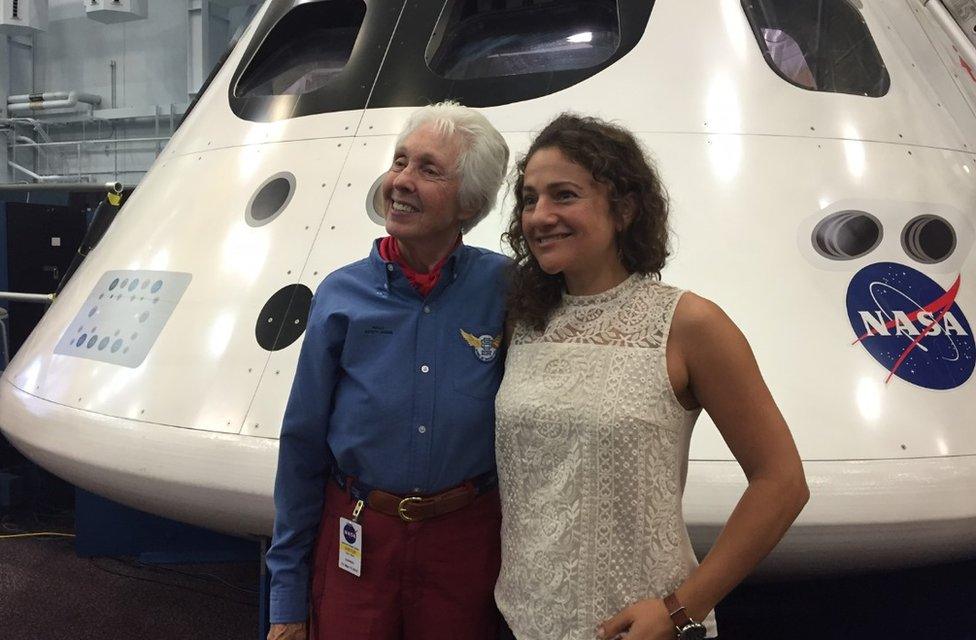
Wally Funk poses for a picture with Jessica Meir, who was selected as a Nasa astronaut candidate in 2013
Nasa flight surgeon Dr Shannan Moynihan was particularly thrilled to meet an original Mercury 13 member. Many of the tests Funk encountered, while nowhere near as extreme, were familiar.
"This is amazing," said Moynihan when Funk showed her the original medical list. "Pretty amazing that back in 1961 when they were first thinking through this, they came up with the same tests."
The Soviet Union beat America in 1963 with the first woman in space, Valentina Tereshkova. It could so easily have been Funk. Nasa did not allow women into the astronaut corps until 1978 and it's not over yet.
Funk has bought a ticket for the first commercial flight of Virgin Galactic's SpaceShipTwo. And she's busting to go up.
Towards the end of our recordings, back in her home town of Dallas, Wally relished being back in the driver's seat.
Heading down a motorway at 60 miles an hour, in a vehicle whose license plate states "A woman's place is in the cockpit", I squealed in fear after noticing that neither hand was on the wheel.
Funk laughed loudly, something she does often, and said innocently: "Have you never driven with your knee before?"